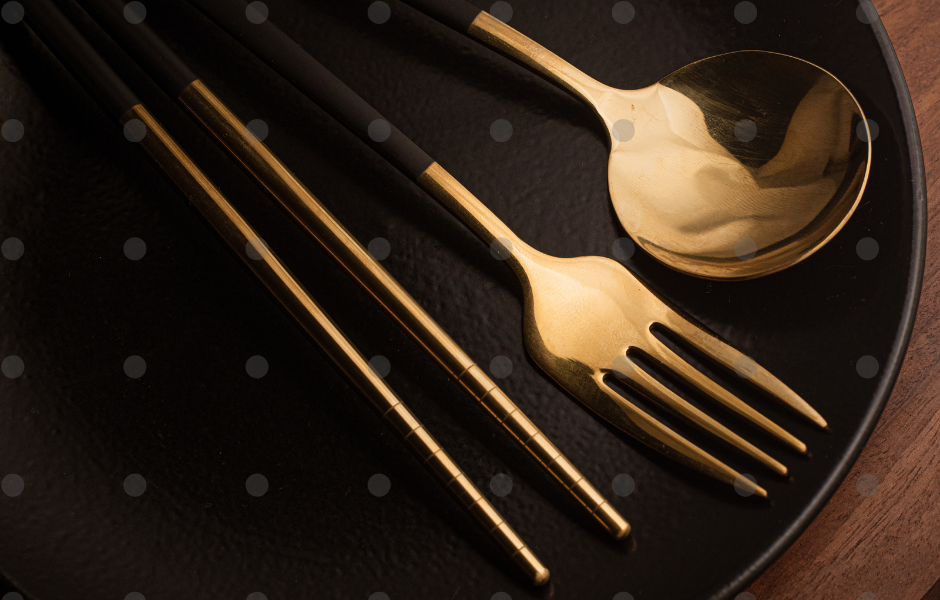
This children’s article, Why do people eat with their hands, forks, or chopsticks?, has been written for native English speakers and learners of English as a second or foreign language. It can help children practise reading and comprehension, learn useful vocabulary, and discover how different cultures eat their meals. Written by Sinead O’Carroll, an experienced teacher and writer.
Eating tools around the world
People all around the world enjoy their food in many different ways. Some use forks, knives, and spoons, while others use chopsticks or their hands.
These eating habits tell us stories about a country’s history, culture, and the types of food people love.
Eating with our hands
Eating with your hands might sound unusual if you’ve grown up using cutlery. However, in many countries, it is completely normal. In places like India, Ethiopia, and parts of the Middle East, eating with your hands is a traditional and respectful way to enjoy food. People often use bread or rice to scoop up bites.
In some cultures, people only eat with their right hand. The left hand is used for cleaning yourself after going to the toilet, so it’s not considered clean for eating. That’s why washing your hands before and after meals is very important.
No matter where in the world you live, you’ve probably eaten something with your hands – maybe a burger, a slice of pizza, or a juicy peach!
Using chopsticks
Chopsticks are popular in East Asia, including countries like China, Japan, Korea, and Vietnam. They are often made from bamboo, wood, or plastic. People learn to pick up rice, noodles, and vegetables with chopsticks – it takes practice!
Each country has slightly different chopstick rules. For example, in Japan, you should never stick chopsticks upright into a bowl of rice. It’s seen as bad luck.
Have you ever tried using chopsticks? It can be tricky at first – or maybe you’re from a country where they’re used every day!
Forks, knives, and spoons
Forks, knives, and spoons are common in Europe, North America, and many other parts of the world. In some places, people use all three, in others, they mostly use a spoon and fork together.
In Thailand, people do use chopsticks sometimes, but many meals are eaten with a spoon and fork. The spoon goes in the right hand, and the fork in the left. The fork isn’t for eating from, it’s used to push food onto the spoon.
What we can learn from different ways to eat
These ways of eating aren’t just habits, they’re part of culture. What people use at the table can tell us about history, family life, and what different cultures find important. Learning about eating styles around the world can help us understand and respect each other.
You can learn more about global food traditions here.

Article vocabulary list
- Cutlery – Tools like forks, knives, and spoons used for eating.
- Chopsticks – A pair of thin sticks used in some Asian countries to pick up food.
- Tradition – A custom or way of doing something passed down through generations.
- Respectful – Showing good manners or honouring something or someone.
- Unclean – Not clean; seen as dirty or not suitable for eating.
- Scoop – To pick something up, especially soft or loose food, using a tool or hand.
- Practice – Doing something many times to get better at it.
- Custom – A usual way of behaving or doing something in a society.
Comprehension questions
Just click the plus (+) to see the answer
1. What do people in Thailand often use to eat?
a) Chopsticks only
b) A spoon and fork
c) Their hands
Answer: b) A spoon and fork
2. Why do some people eat with only their right hand?
Answer: Because the left hand is traditionally seen as unclean.
3. Where are chopsticks commonly used?
a) South America
b) East Asia
c) Northern Europe
Answer: b) East Asia
4. What does the word “tradition” mean?
Answer: A custom or way of doing something passed down through generations.
5. Why should you not stick chopsticks upright in rice in Japan?
a) It is rude to others
b) It is too hard to do
c) It is seen as bad luck
Answer: c) It is seen as bad luck
6. What can we learn by looking at how people eat in different countries?
Answer: We can learn about history, values, and culture.
Sinead is a writer and EFL teacher with eight years’ experience. She’s a native English speaker who loves making news stories fun and easy to understand for children around the world. Her passions include travel, animals, and helping to make the world a kinder, more sustainable place.




